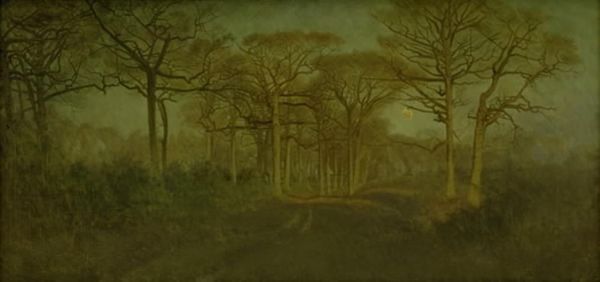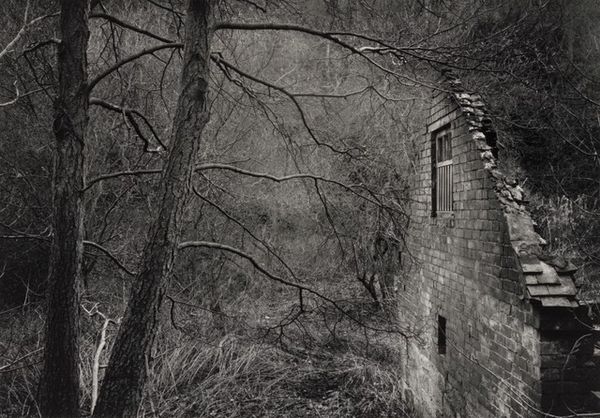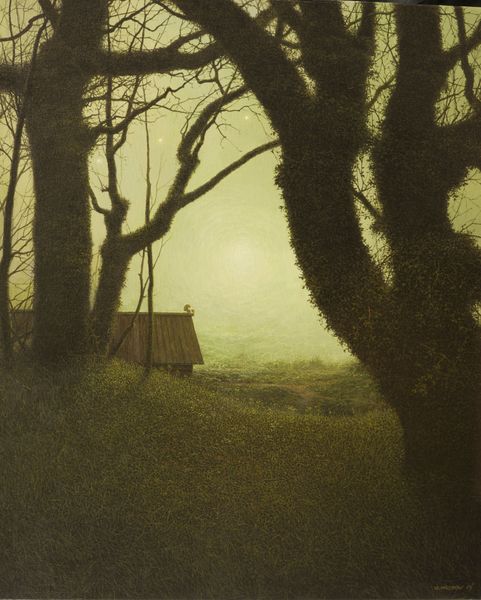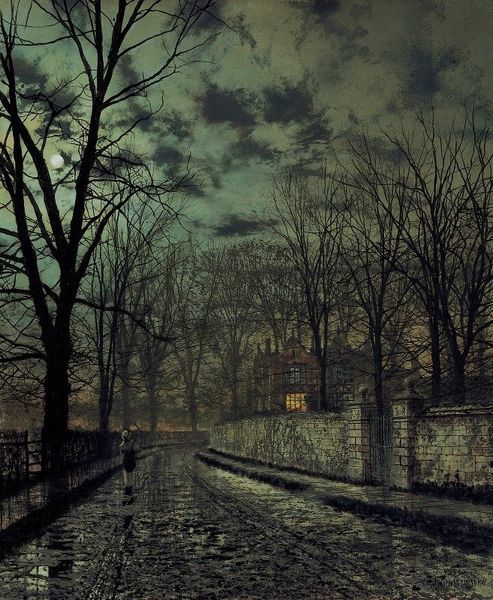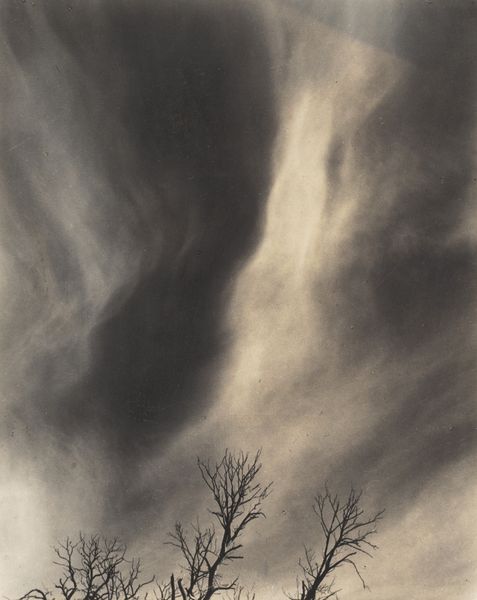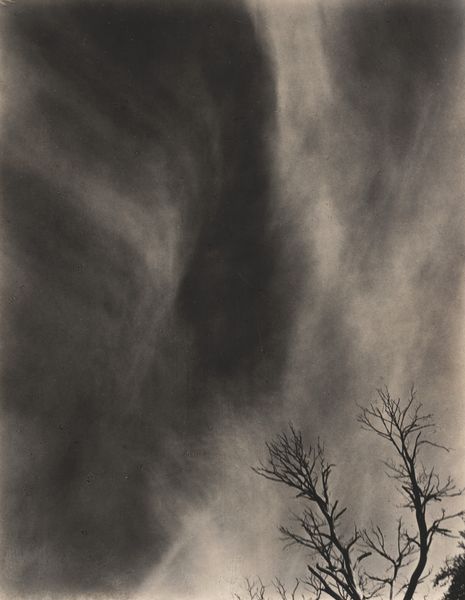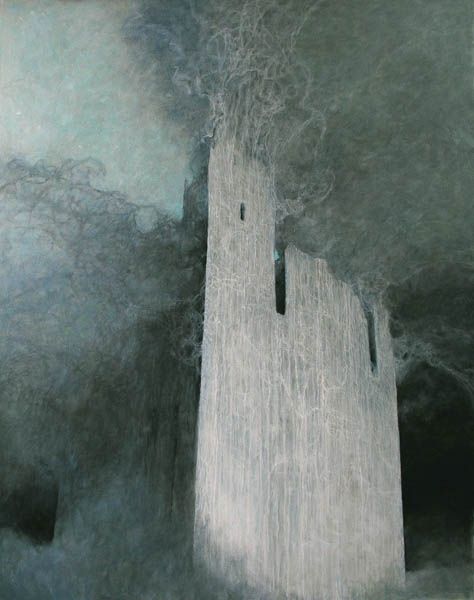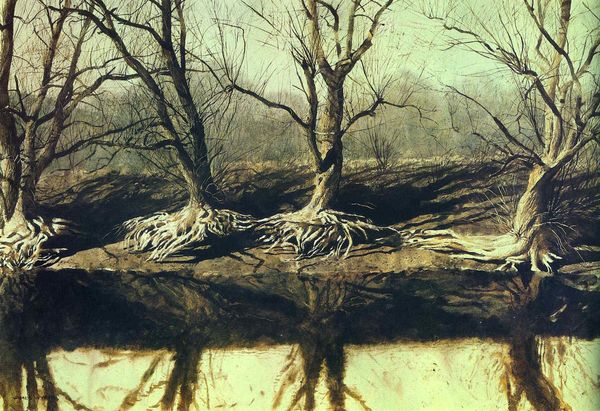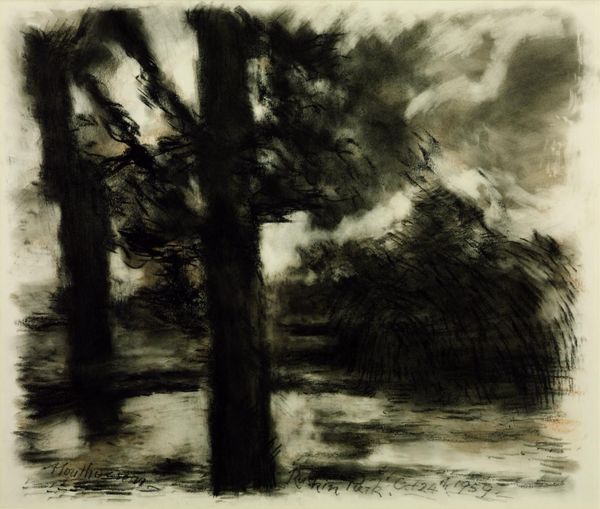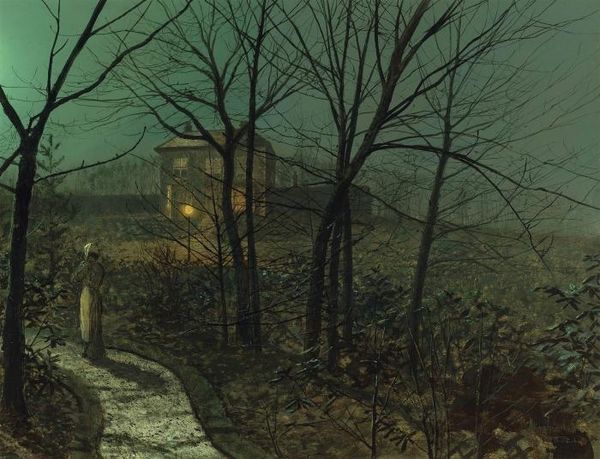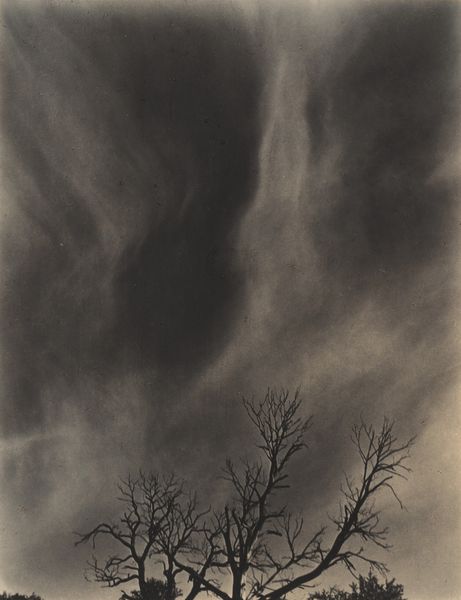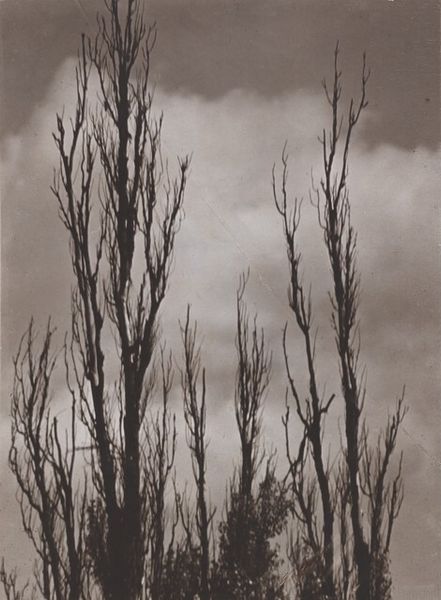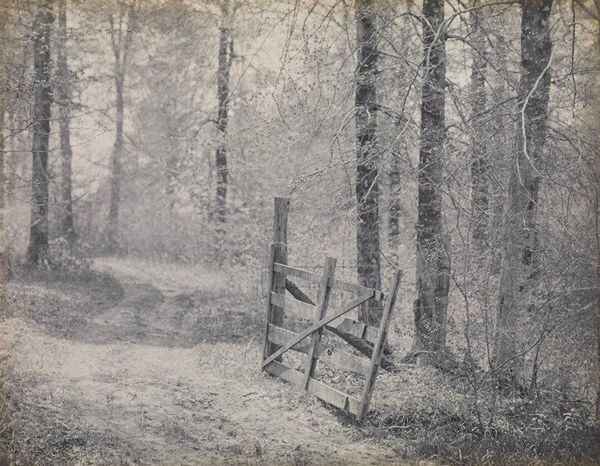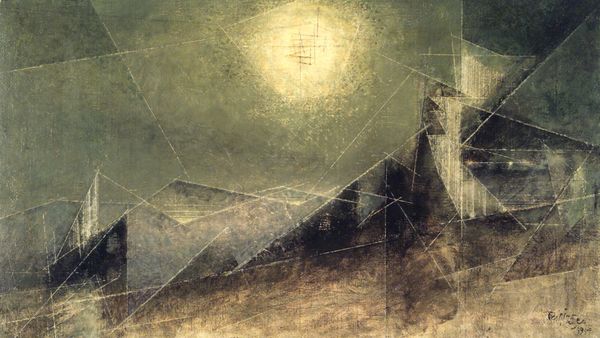
Dimensions: 110 x 171 cm
Copyright: Public domain
Editor: So, here we have Caspar David Friedrich's "The Abbey in the Oakwood" from 1810. It's an oil and tempera on canvas depicting a ruined abbey in winter. I'm struck by how melancholic and evocative it is, almost like a stage for a gothic drama. What catches your eye when you look at this piece? Curator: It’s a powerful statement about the changing role of the church and religious institutions in early 19th-century Europe. Friedrich painted this during a period of immense social and political upheaval in Germany with the Napoleonic occupation and the secularization of church lands. What do you make of the skeletal trees dominating the landscape around the Abbey? Editor: They look so desolate, as if reaching for something beyond the frame, perhaps representative of death or a decaying past. Curator: Precisely. Think about the societal function of monasteries at the time; places of stability, faith, and community. The ruined abbey and the leafless trees speak to a society grappling with the erosion of these traditional structures in favor of newer, secular ideologies. How does the position of the tiny monks entering the gate play into your understanding? Editor: Oh, that detail highlights how insignificant the individual feels compared to this grand, decaying monument and, maybe even, a waning religious authority. It's a small flicker of hope, like they are embracing what’s left? Curator: Perhaps. Their placement also prompts us to consider who controls the narrative. Are these monks embracing change, or are they a commentary on the inevitable disappearance of religious life altogether? It's important to see how paintings like this functioned in the construction of national identity and cultural anxiety. Editor: I hadn’t considered the nation-building angle. This has shifted my perspective entirely. Thanks! Curator: Indeed, seeing art through its historical context illuminates its many potential meanings, revealing the socio-political forces that shaped its creation.
Comments
No comments
Be the first to comment and join the conversation on the ultimate creative platform.
